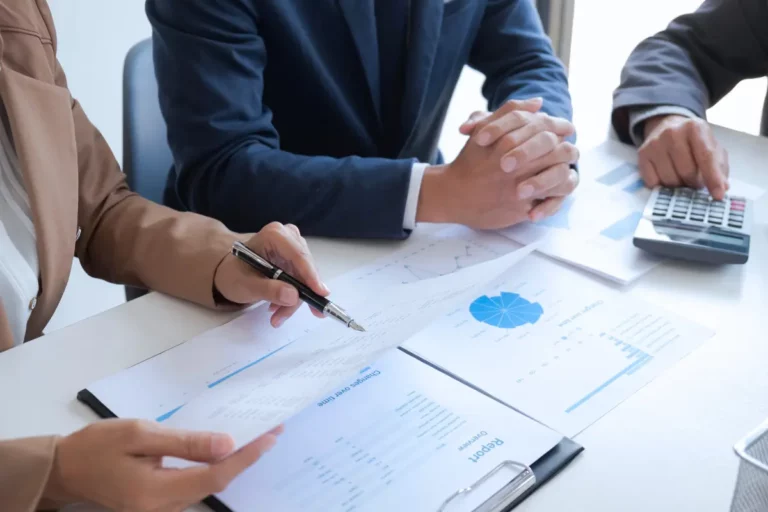What is Asset Lifecycle Management?
An asset is any resource owned or controlled by a business that can provide future economic benefits. These assets can span from physical tangibles, such as buildings, machinery, and inventory, to digital intangibles like software, customer data, or the very infrastructure that supports the digital presence of a business.
No matter their form or function, all these assets go through different stages throughout their life, from acquisition and usage to eventual disposal. This process is referred to as Asset Lifecycle Management (ALM). Comprehensive understanding and effective management of this lifecycle are vital in optimizing asset usage, minimizing costs, and ultimately, driving business success.
Software vs Hardware Assets
In the dynamic ecosystem of business resources, software and hardware assets form the two pillars of operational efficiency.
Software asset management lifecycle involves the comprehensive management of software applications from procurement to disposal. The aim is to optimize the performance and cost-effectiveness of software throughout its lifespan.
On the other hand, hardware asset lifecycle management is concerned with tangible physical assets like computers, machinery, and other equipment. The goal is to ensure the maximum productivity and longevity of these physical assets.
Key Phases of Asset Lifecycle Management
While both hardware and software lifecycles share the same stages, their management processes differ. Software lifecycle management often revolves around compliance, license renewals, and maintenance updates. Hardware lifecycle management, meanwhile, demands a focus on physical maintenance, upgrade planning, and efficient disposal strategies.
The asset lifecycle is divided into five key phases: planning, procurement, deployment, operation and maintenance, and disposal. Each stage has its complexities and demands, making a comprehensive asset lifecycle management solution a necessity for effective management.
01. Planning
Before acquiring a new asset, businesses must determine the necessity and potential benefits of this asset. This phase involves assessing current operations, analyzing gaps, and projecting the anticipated return on investment (ROI).
02. Procurement
Once the need for an asset is confirmed, the next step is procurement. It involves researching different vendors, comparing their offerings, and making an informed choice. For software assets, this step also includes negotiating software licenses and understanding compliance requirements. For hardware assets, procurement could involve specifications, warranty details, and vendor support services.
03. Deployment
Post-procurement, assets need to be deployed effectively. In the case of hardware, this includes the installation of equipment and initial setup. For software, deployment involves installation across various systems, configuration, and possibly user training. The goal at this stage is to get the asset operational with minimum disruption to ongoing business processes.
04. Operation and Maintenance
This phase is the longest and most crucial in the lifecycle. It involves the day-to-day use of the assets and regular maintenance. For software, this would include routine updates, patch management, and license renewals. For hardware, it includes preventive maintenance, equipment inspections, and handling any hardware issues or failures.
05. Disposal
Finally, when an asset reaches the end of its useful life, it must be disposed of efficiently and ethically. For hardware assets, this involves data wiping, recycling, or reselling of the equipment following environmental regulations. For software assets, this includes decommissioning the software, ensuring that all data is securely removed, and license terminations are properly conducted.
Each phase of the asset lifecycle offers opportunities for cost savings, efficiency improvements, and risk mitigation. An effective asset lifecycle management software, like Revnue, can assist businesses in navigating these stages more efficiently, maximizing the value derived from their assets.
The Benefits of Asset Lifecycle Management
Understanding and effectively managing the lifecycle of assets can yield significant benefits, impacting not just operational efficiency but also financial performance and strategic agility. Here are some key advantages that robust asset lifecycle management can offer:
01. Optimized Asset Utilization
Effective lifecycle management ensures that each asset, be it software or hardware, is used to its full potential, increasing efficiency and reducing waste. This could mean better distribution of software licenses, more balanced use of machinery, or maximized usage of physical spaces.
02. Reduced Costs
With a strong grasp of the asset lifecycle, businesses can avoid premature replacements and unnecessary purchases, effectively bringing down capital expenditure. Additionally, well-maintained assets incur lower repair costs and are less likely to cause costly operational disruptions.
03. Enhanced Decision-Making
Lifecycle data gives businesses valuable insights into asset performance, helping identify patterns and trends. This could guide strategic decisions like when to upgrade a system, whether to renew a software license, or which vendor to choose for the next purchase.
04. Improved Compliance
With regulatory pressures mounting in many industries, lifecycle management can play a key role in maintaining compliance. This could involve tracking software licenses to prevent legal issues, maintaining equipment to meet safety standards, or managing data responsibly to comply with privacy laws.
05. Sustainable Business Practices
Finally, lifecycle management promotes sustainability by encouraging businesses to extend the life of their assets and dispose of them responsibly. This not only aligns with increasing societal expectations around environmental responsibility but can also offer tangible benefits like cost savings from recycling or resale of used assets.
Best Practices for Using Asset Lifecycle Management Software
Adopting asset lifecycle management software is a significant step towards efficient asset management. However, to fully realize its potential, organizations should adopt some best practices. Here are some strategies to maximize the benefits of using asset lifecycle management software:
01. Comprehensive Asset Inventory
The first step towards effective asset management is having a thorough inventory. Ensure that all assets, both hardware and software, are catalogued in the system, with all relevant details like make, model, version, specifications, location, and assigned user.
02. Regular Updates and Maintenance
The value of asset lifecycle management software is only as good as the data it contains. It’s important to update the system regularly, especially after major events like acquisitions, disposals, or upgrades. This helps maintain accurate, real-time information, providing a reliable basis for decision-making.
03. Implement Predictive Maintenance
Modern asset lifecycle management solutions often incorporate predictive analytics, which can help anticipate potential asset failures and optimize maintenance scheduling. Leveraging this feature can significantly enhance asset longevity and reliability.
04. Monitor Software Licenses
In the context of software asset management lifecycle, it’s essential to monitor software licenses to prevent overuse or underuse. The software should alert when licenses are about to expire, need renewal, or when there is an unused license that could be reallocated.
04. Leverage Reporting Capabilities
Most asset lifecycle management software provides robust reporting capabilities. Regularly generate and review these reports to gain insights about asset performance, usage, cost-efficiency, and other valuable metrics.
05. Integrate with Other Systems
To maximize its utility, integrate the asset lifecycle management software with other systems such as procurement, finance, HR, and IT service management. This not only helps ensure data consistency but also allows for a more comprehensive view of the asset landscape.
06. Train Users
Finally, ensure that all relevant stakeholders are trained to use the software. This includes not only the technical staff responsible for managing the assets, but also other users who need to access asset data for their roles, such as finance or procurement teams.
Revnue: Your Partner in Asset Lifecycle Management
Revnue, as a comprehensive asset lifecycle management software, simplifies and optimizes the process of managing your assets throughout their lifecycle. From tracking the performance of your assets, managing costs, to ensuring regular maintenance and compliance, Revnue provides a holistic asset lifecycle management solution. It’s a reliable tool that caters to the needs of modern businesses, whether it’s software asset management lifecycle or hardware asset lifecycle management.

Future Trends in Asset Lifecycle Management
The world of ALM is dynamic, evolving with technological advancements and changing business needs. Some future trends include the increasing use of IoT for real-time asset tracking, AI for predictive maintenance, and integration with other business systems for enhanced efficiency.
As businesses continue to embrace digital transformation, customer asset lifecycle management is also gaining traction, helping organizations to better understand and manage their customer assets’ lifecycle.
With Revnue, businesses can stay ahead of these trends, leveraging a robust and adaptable platform that evolves with their needs.
Conclusion
In the ever-evolving landscape of modern business, effective asset lifecycle management forms the foundation for operational efficiency and strategic success. Harnessing both hardware and software assets, companies can transform the way they plan, procure, deploy, maintain, and dispose of their valuable resources. Every phase presents unique opportunities for cost savings, efficiency improvements, and risk mitigation.
Asset lifecycle management software, such as Revnue, allows for comprehensive asset inventory, regular updates, predictive maintenance, software license monitoring, and robust reporting. It seamlessly integrates with other business systems, offering a holistic view of the asset landscape and fostering better decision-making. Crucially, Revnue’s asset lifecycle management solutions help in realizing the full potential of assets, reducing costs, enhancing compliance, and promoting sustainable practices.








